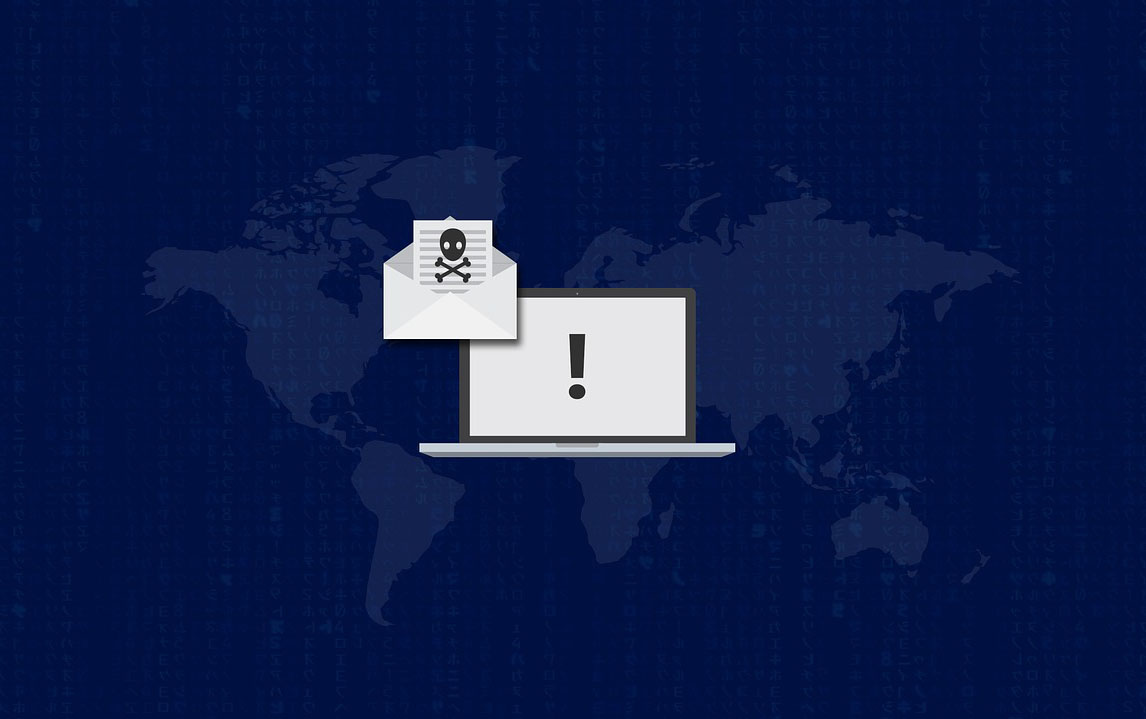Target’s $19 million settlement with MasterCard[1] underscores very significant sources of potential exposure that often follow a data breach that involves payment cards. Retailers and other organizations that accept those cards are likely to face—in addition to a slew of claims from consumers and investors— claims from financial institutions that seek to recover losses associated with issuing replacement credit and debit cards, among other losses. The financial institution card issuers typically allege, among other things, negligence, breach of data-protection statutes and non-compliance with Payment Card Industry Data Security Standards (PCI DSS). Likewise, as Target’s recent settlement illustrates, organizations can expect to face claims from the payment brands, such as MasterCard, VISA and Discover, seeking substantial fines, penalties and assessments for purported PCI DSS non-compliance.
These potential sources of liability can eclipse others. While consumer lawsuits often get dismissed for lack of Article III standing,[2] for example, or may settle for relatively modest amounts,[3] the Target financial institution litigation survived a motion to dismiss[4] and involved a relatively high settlement amount as compared with the consumer litigation settlement. So did TJZ’s prior $24 million settlement with card issuers.[5] The current settlement involves only MasterCard,[6] moreover, and the Target financial institution litigation will proceed with any issuer of MasterCard-branded cards that declines to partake of the $19 million settlement offer. The amended class action in the Target cases alleges that the financial institutions’ losses “could eventually exceed $18 billion.”[7]
Organizations should be aware that these significant potential sources of data breach and payment brand liability may be covered by insurance, including commercial general liability insurance (CGL), which most companies have in place, and specialty cybersecurity/data privacy insurance.
Here are five steps for securing coverage for data breach and PCI DSS-related liability:
Step 1: Look to CGL Coverage
Coverage A: “Property Damage” Coverage
Payment card issuers typically seek damages because of the necessity to replace cards and, often, also specifically allege damages because of the loss of use of those payment cards, including lost interest, transaction fees and the like. By way of illustration, the amended class action complaint in the Target litigation alleges:
The financial institutions that issued the debit and credit cards involved in Target’s data breach have suffered substantial losses as a result of Target’s failure to adequately protect its sensitive payment data. This includes sums associated with notifying customers of the data breach, reissuing debit and credit cards, reimbursing customers for fraudulent transactions, monitoring customer accounts to prevent fraudulent charges, addressing customer confusion and complaints, changing or canceling accounts and facing the decrease or suspension of their customers’ use of affected cards during the busiest shopping season of the year.[8]
The litigation further alleges that “plaintiffs and the FI [financial institution] class also lost interest and transaction fees (including interchange fees) as a result of decreased, or ceased, card usage in the wake of the Target data breach.”[9]
These allegations fall squarely within the standard-form definition of covered “property” damage under CGL Coverage A. Under Coverage A, the insurer commits to “pay those sums that the insured becomes legally obligated to pay as damages because of … ‘property damage’… caused by an ‘occurrence’”[10] that “occurs during the policy period.”[11] The insurer also has “the right and duty to defend the insured against any … civil proceeding in which damages because of … ‘property damage’ … are alleged.”[12]
Importantly, the key term “property damage” is defined to include not just “physical injury to tangible property” but also “loss of use of tangible property that is not physically injured.” The key definition in the current standard-form CGL insurance policy states as follows:
- “Property damage” means:
- Physical injury to tangible property, including all resulting loss of use of that property. All such loss of use shall be deemed to occur at the time of the physical injury that caused it; or
- Loss of use of tangible property that is not physically injured. All such loss of use shall be deemed to occur at the time of the “occurrence” that caused it.
For the purposes of this insurance, electronic data is not tangible property.
In this definition, "electronic data" means information, facts or programs stored as or on, created or used on or transmitted to or from computer software, including systems and applications software, hard or floppy disks, CD-ROMs, tapes, drives, cells, data processing devices or any other media that are used with electronically controlled equipment.[13]
Although the current definition states that “electronic data is not tangible property,” to the extent this standard-form language may be present in the specific policy at issue (coverage terms should not be assumed; rather the specific policy language at issue should always be carefully reviewed),[14] the limitation is largely, perhaps entirely, irrelevant in this context because card issuer complaints, like the amended class action complaint in the Target litigation, typically allege damages because of the need to replace physical, tangible payment cards.[15] The complaints further often expressly allege that the issuers have suffered damages because of a decrease or cessation in the card usage.
These types of allegations are squarely within the “property damage” coverage offered by CGL Coverage A, and courts have properly upheld coverage in privacy-related cases where allegations of loss of use of property are present.[16]
Coverage B: “Personal and Advertising Injury” Coverage
There is significant potential coverage for data breach-related liability, including card issuer litigation, under CGL Coverage B. Under Coverage B, the insurer commits to “pay those sums that the insured becomes legally obligated to pay as damages because of ‘personal and advertising injury,’”[17] which is “caused by an offense arising out of [the insured’s] business … during the policy period.”[18] Similar to Coverage A, the policy further states that the insurer “will have the right and duty to defend the insured against any … civil proceeding in which damages because of … ‘personal and advertising injury’ to which this insurance applies are alleged.”[19]
The key term “personal and advertising injury” is defined to include a list of specifically enumerated offenses, which include “oral or written publication, in any manner, of material that violates a person’s right of privacy.”[20]
Considering this key language, courts have upheld coverage under CGL Coverage B for claims arising out of data breaches and for a wide variety of other claims alleging violations of privacy rights.[21] It warrants mention that, although the trial court in the Sony PlayStation data breach litigation recently ruled against coverage, the trial court’s decision -- which turned on the court’s finding that, essentially, Coverage B is triggered only by purposeful actions by the insured (Sony) and not by the actions of the third parties who hacked into its network -- that decision is currently on appeal to the New York Appellate Division and may soon be reversed. Nowhere in the insuring agreement or its key definition does the CGL policy require any action by the insured. As the coverage’s name “Commercial General Liability” indicates, the coverage does not require intentional action by the insured, as argued by the insurers in the Sony case, but rather is triggered by the insured’s liability, i.e., the insurer commits to pay sums that the insured “becomes legally obligated to pay” that “arise out of” the covered “offenses.” The broad insuring language, moreover, extends to the insured’s liability for publication “in any manner,” i.e., via a hacking attack or otherwise. The cases cited by the insurer in the Sony case are factually inapposite and interpret entirely different policy language. Indeed, Sony’s insurer, Zurich, itself acknowledged in 2009 that CGL policies may provide coverage for data breaches via hacking, which by definition involves third-party actions.[22]
Organizations also should be aware that the Insurance Services Office (ISO), the insurance industry organization responsible for drafting standard-form CGL language, recently promulgated a series of data breach exclusionary endorsements.[23] ISO acknowledged that there currently is data breach coverage for hacking activities under CGL policies. In particular, ISO stated that the new exclusions may be a “reduction in personal and advertising injury coverage”—the implication being that there is coverage in the absence of the new exclusions.
At the time the ISO CGL and CLU policies were developed, certain hacking activities or data breaches were not prevalent and, therefore, coverages related to the access to or disclosure of personal or confidential information and associated with such events were not necessarily contemplated under the policy. As the exposures to data breaches increased over time, stand-alone policies started to become available in the marketplace to provide certain coverage with respect to data breach and access to or disclosure of confidential or personal information.
To the extent that any access or disclosure of confidential or personal information results in an oral or written publication that violates a person’s right of privacy, this revision may be considered a reduction in personal and advertising injury coverage.[24]
Other than the trial court’s decision in the Sony case, no decision has held that an insured must itself publish information to obtain CGL Coverage B coverage, and a number of decisions have appropriately upheld coverage for liability that the insured has resulting from third-party publications.[25]
The bottom line: There may be very significant coverage under CGL policies, including for data breaches that result in the disclosure of personally identifiable information and other claims alleging violation of a right to privacy, including claims brought by card issuers.
Step 2: Look to “Cyber” Coverage
Organizations are increasingly purchasing so-called “cyber” insurance, and a major component of the coverage offered under most “cyber” insurance policies is coverage for the spectrum of issues that an organization typically confronts in the wake of a data breach incident. This usually includes, not only defense and indemnity coverage in connection with consumer litigation and regulatory investigation, but also defense and indemnity coverage in connection with card issuer litigation. By way of example, one specimen policy insuring agreement states that the insurer will “pay … all loss” that the “insured is legally obligated to pay resulting from a claim alleging a security failure or a privacy event.” The key term “privacy event” includes “any failure to protect confidential information,” a term that is broadly defined to include “information from which an individual may be uniquely and reliably identified or contacted, including, without limitation, an individual’s name, address, telephone number, Social Security number, account relationships, account numbers, account balances, account histories and passwords.” “Loss” includes “compensatory damages, judgments, settlements, pre-judgment and post-judgment interest and defense costs.” Litigation brought by card issuers is squarely within the coverage afforded by the insuring agreement and its key definitions.
Importantly, a number of “cyber” insurance policies also expressly cover PCI DSS-related liability. By way of example, the specimen policy quoted above expressly defines covered “loss” to include “amounts payable in connection with a PCI-DSS Assessment,” which is defined as follows:
“PCI-DSS assessment” means any written demand received by an insured from a payment card association (e.g., MasterCard, Visa, American Express) or bank processing payment card transactions (i.e., an “acquiring bank”) for a monetary assessment (including a contractual fine or penalty) in connection with an insured’s non-compliance with PCI Data Security Standards that resulted in a security failure or privacy event.
This can be a very important coverage, given that, as the recent Target settlement illustrates, organizations face substantial liability arising out of the card brand and association claims for fines, penalties and assessments for purported non-compliance with PCI DSS. The payment card brands routinely claim that an organization was not PCI DSS-compliant and that the PCI forensic investigator assigned to investigate compliance routinely determines that the organization was not compliant at the time of a breach. As the payment industry has stated, “no compromised entity has yet been found to be in compliance with PCI DSS at the time of a breach.”[26]
The bottom line: “Cyber” insurance policies may provide broad, solid coverage for the costs and expenses that organizations may incur in connection with card-issuer litigation and payment brand claims alleging PCI non-compliance.
Step 3: Look to Other Potential Coverage
It is important not to overlook other types of insurance policies that may respond to cover various types of exposure flowing from a breach. For example, there may be coverage under directors’ and officers’ (D&O) policies, professional liability or errors and omissions (E&O) policies and commercial crime policies. After a data breach, companies are advised to provide prompt notice under all potentially implicated policies, excepting in particular circumstances that may justify refraining to do so, and to carefully evaluate all potentially applicable coverages.
Step 4: Don’t Take “No” For an Answer
Unfortunately, even where there is a legitimate claim for coverage under the policy language and applicable law, an insurer may deny a claim. Indeed, insurers can be expected to argue, as Sony’s insurers argued, that data breaches are not covered under CGL insurance policies. Nevertheless, insureds that refuse to take “no” for an answer may be able to secure valuable coverage.
If, for example, an insurer reflexively raises the “electronic data” exclusion in response to a claim under CGL Coverage A, which purports to exclude, under the standard form, “[d]amages arising out of the loss of, loss of use of, damage to, corruption of, inability to access or inability to manipulate electronic data,”[27] insureds are encouraged to point out that the damages alleged by card issuers for replacing physical cards and for lost interest and transaction fees, etc., resulting from loss of use of those cards, are clearly outside the purview of the exclusion. Likewise, if an insurer raises the standard “Recording And Distribution Of Material Or Information In Violation Of Law” exclusion, insureds are encouraged to point out that the exclusion has been narrowly interpreted, does not address common-law claims and has been held inapplicable where the law at issue fashions relief for common law rights.[28]
Importantly, exclusions and other limitations to coverage are construed narrowly against the insurer and in favor of coverage under well-established rules of insurance policy interpretation,[29] and the burden is on the insurer to demonstrate an exclusion’s applicability.[30]
Step 5: Maximize Cover Across the Entire Insurance Portfolio
Various types of insurance policies may be triggered by a data breach, and the various triggered policies may carry different insurance limits, deductibles, retentions and other self-insurance features, together with various different and potentially conflicting provisions addressing, for example, other insurance, erosion of self-insurance and stacking of limits. For this reason, in addition to considering the scope of substantive coverage under an insured’s different policies, it is important to carefully consider the best strategy for pursing coverage in a manner that will maximize the potentially available coverage across the insured’s entire insurance portfolio. By way of example, if there is potentially overlapping CGL and “cyber” insurance coverage, remember that defense costs often do not erode CGL policy limits, and structure the coverage strategy accordingly.
When facing a data breach, companies should carefully consider the insurance coverage that may be available. Insurance is a valuable asset. Before a breach, companies should take the opportunity to carefully evaluate and address their risk profile, potential exposure, risk tolerance, sufficiency of their existing insurance coverage and the role of specialized cyber coverage. In considering that coverage, please note that there are many specialty “cyber” products on the market. Although many, if not most, of these policies purport to cover many of the same basic risks, including data breaches and other types of “cyber” and data privacy-related risk, the policies vary dramatically. It is important to carefully review policies for appropriate coverage prior to purchase and, in the event of a claim, to carefully review the scope of all potentially available coverage.
This article was first published in Law360.
[1] Target Strikes $19M Deal With MasterCard Over Data Breach, Law360 (April 15, 2015). The settlement is contingent upon at least 90% of the eligible MasterCard issuers accepting their alternative recovery offers by May 20.
[2] See, e.g., No Data Misuse? No Standing For Data Breach Plaintiffs, Law360 (April 24, 2014).
[3] Target Will Pay Consumers $10M To End Data Breach MDL, Law360, New York (March 19, 2015).
[4] See, e.g., Target Loses Bid to KO Banks' Data Breach Litigation, Law360 (April 15, 2015).
[5] TJX Reaches $24M Deal With MasterCard Issuers, Law360 (April 2, 2008).
[6] The company is reported to be in similar negotiations with Visa.
[7] In re: Target Corporation Customer Data Security Breach Litigation, MDL No. 14-2522 (PAM/JJK) (D. Minn), at ¶ 87 (filed August 1, 2014).
[8] Id., ¶ 2 (emphasis added).
[9] Id., ¶ 86 (emphasis added).
[10] ISO Form CG 00 01 04 13 (2012), Section I, Coverage A, §1.a., §1.b.(1).
[11] Id., Section I, Coverage A, §1.b.(2).
[12] Id., Section I, Coverage A, §1.a.; Section V, §18.
[13] ISO Form CG 00 01 04 13 (2012), Section V, §17 (emphasis added).
[14] In the absence of such language, a number of courts have held that damaged or corrupted software or data is “tangible property” that can suffer “physical injury.” See, e.g., Retail Sys., Inc. v. CNA Ins. Co., 469 N.W.2d 735 (Minn. Ct. App. 1991); Centennial Ins. Co. v. Applied Health Care Sys., Inc., 710 F.2d 1288 (7th Cir. 1983) (California law); Computer Corner, Inc. v. Fireman’s Fund Ins. Co., No. CV97-10380 (2d Dist. Ct. N.M. May 24, 2000).
[15] See also Eyeblaster, Inc. v. Federal Ins. Co., 613 F.3d 797 (8th Cir. 2010).
[16] See, e.g., District of Illinois in Travelers Prop. Cas. Co. of America v DISH Network, LLC, 2014 WL 1217668 (C.D, Ill. Mar. 24, 2014); Columbia Cas. Co. v. HIAR Holding, L.L.C., 411 S.W.3d 258 (Mo. 2013).
[17] ISO Form CG 00 01 04 13 (2012), Section I, Coverage B, §1.a.
[18] Id., Section I, Coverage B, §1.b..
[19] Id.. Section I, Coverage B, §1.a.; Section V, §18.
[20] Id.. Section V, §14.e.
[21] See, e.g., Hartford Cas. Ins. Co. v. Corcino & Assocs,. 2013 WL 5687527 (C.D. Cal. Oct. 7, 2013).
[22] Zurich, Data security: A growing liability threat (2009), available at http://www.zurichna.com/NR/rdonlyres/23D619DB-AC59-42FF-9589-C0D6B160BE11/0/DOCold2DataSecurity082609.pdf (emphasis added).
[23] These new exclusions became effective in most states last May 2014. One of the exclusionary endorsements, titled “Exclusion - Access Or Disclosure Of Confidential Or Personal Information,” adds the following exclusion to the standard form policy:
This insurance does not apply to:
Access Or Disclosure Of Confidential Or Personal Information
“Personal and advertising injury” arising out of any access to or disclosure of any person’s or organization’s confidential or personal information, including patents, trade secrets, processing methods, customer lists, financial information, credit card information, health information or any other type of non public information.
CG 21 08 05 14 (2013). See also Coming To A CGL Policy Near You: Data Breach Exclusions, Law360 (April 23, 2014).
[24] ISO Commercial Lines Forms Filing CL-2013-0DBFR, at pp. 3, 7-8 (emphasis added).
[25] See, e.g., Hartford Cas. Ins. Co. v. Corcino & Assocs,. 2013 WL 5687527 (C.D. Cal. Oct. 7, 2013).
[26] Visa: Post-breach criticism of PCI standard misplaced (March 20, 2009), available at http://www.computerworld.com.au/article/296278/visa_post-breach_criticism_pci_standard_misplaced/
[27] CG 00 01 04 13 (2012), Section I, Coverage A, §2.p.
[28] See, e.g., Hartford Cas. Ins. Co. v. Corcino & Assocs,. 2013 WL 5687527 (C.D. Cal. Oct. 7, 2013). For example, in the Corcino case, the court upheld coverage for statutory damages arising out hospital data breach that compromised the confidential medical records of nearly 20,000 patients, notwithstanding an express exclusion for “personal and advertising Injury …. [a]rising out of the violation of a person’s right to privacy created by any state or federal act.” Corcino and numerous other decisions underscore that, notwithstanding a growing prevalence of exclusions purporting to limit coverage for data breach and other privacy related claims, there may yet be valuable privacy and data breach coverage under “traditional” or “legacy” policies that should not be overlooked.
[29] See, e.g., 2 Couch on Insurance § 22:31 (“the rule is that, such terms are strictly construed against the insurer where they are of uncertain import or reasonably susceptible of a double construction, or negate coverage provided elsewhere in the policy”).
[30] See, e.g., 17A Couch on Insurance § 254:12 (“The insurer bears the burden of proving the applicability of policy exclusions and limitations or other types of affirmative defenses”).








